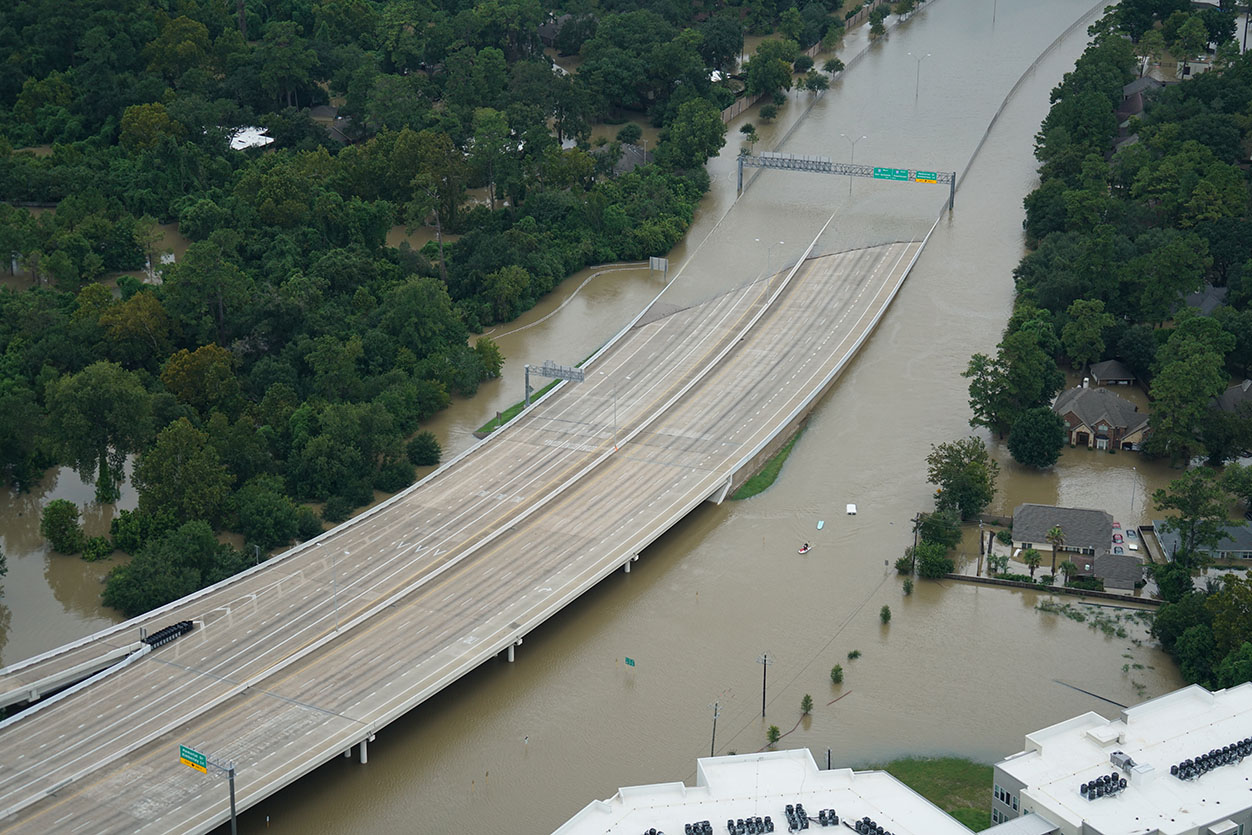When Harvey Met Sandy: A Resilient Story

The premise is simple–infrastructure should be “resilient”. The practice is more difficult. Since Hurricane Sandy, a significant amount of research has been conducted on designing and constructing “resilient” infrastructure. Almost all of the research has focused on increased surface temperatures of the earth and associated increased risks of flooding and catastrophic rain events, such as Hurricane Harvey. Little attention has been paid to increased probability of extreme cold weather events precipitated by disruptions in Artic weather patterns. But as the Texas Valentine’s Freeze of 2021 demonstrates, extreme cold weather events are in our future, too. When Harvey met Sandy, resilience, not romance, ensued.
A. What is resilience?
Resilience has been defined as, “the ability to adapt to changing conditions and withstand and rapidly recover from disruption due to emergencies.” Hurricane Sandy put the term resilience into engineering practice, predominantly to address coastal flooding associated with hurricanes of increased intensity and duration.
B. How is resilience measured?
For climate-induced changes, multiple models have been proposed to measure infrastructure resilience. One of the more commonly referenced models is borrowed from seismic (earthquake) design. It uses four Rs and a graph called the resilience triangle. The four Rs are:
1. Robustness: How well does the system withstand external shocks without significant loss of performance?
2. Redundancy: How well can other elements of the system sustain functionality in when disturbance occurs?
3. Resourcefulness: How well are resources monitored and problems diagnosed and prioritized?
4. Rapidity: How quickly can the system recover and future disruptions be avoided?
C. How is do we design and build resilient infrastructure?
Definitions and models aside, one of the more difficult questions posed by climate change is how we can design and construct infrastructure that is resilient. While building a seawall around lower Manhattan was one of the ideas discussed after Hurricane Sandy, the cost was enormous and the area affected—at least relative to the number of coastal communities impacted by rising sea levels—very small. More specific to the Texas Valentine’s Freeze and EROCT, even if the electric grid can be upgraded to become more resilient, numerous other infrastructure elements, such as water treatment and conveyance systems will also need to be upgraded.
In 2018, the American Society of Civil Engineers published, Climate-Resilient Infrastructure: Adaptive Design and Risk Management. The authors suggested several strategies, including designing infrastructure for the “most probable weather or climate conditions” rather the most extreme and using adaptive design and adaptive risk management. The problems with these strategies is the amount and degree of uncertainty that climate change creates. As the authors recognize (in a very convoluted fashion), “The uncertainty associated with future climate is not completely quantifiable, and therefore accounting for it in engineering practice would require an appropriate understanding and treatment of uncertainty including engineering judgment”. Clear as mud.
D. What does this mean for designers and contractors?
Climate change and the resiliency of our designed and built environment creates both enormous opportunity and enormous risk to designers and contractors. Existing systems need to be upgraded to prevent failures of the nature and extent experienced as a result of the Texas Valentine’s Freeze, creating a lot of new design and construction work. On the other hand, design professionals will be expected to use their “design judgment” to account for the uncertainties of climate change and contractors will be expected to construct the systems with sufficient robustness and redundancy to allow the infrastructure to operate under harsh and uncertain weather conditions. The ultimate goal moving forward will be to build with the future of not only the structure, but also nature in mind.
For the risks and rewards to balance out, all parties participating in the design and construction of infrastructure should understand and properly allocate risks. As with so many other aspects of the construction industry, the contracts between the parties are one of the primary means of allocating risk. The attorneys in our Austin and Dallas offices have significant experience negotiating, drafting, interpreting development agreements, design professional services agreements, construction contracts, and subcontract agreements, and are available to answer any questions you have. You may contact us at info@gstexlaw.com.
Legal Disclaimers
This blog is made available by Gerstle Snelson, LLP for educational purposes and to provide general information about the law, only. Neither this document nor the information contained in it is intended to constitute legal advice on any specific matter or of a general nature. Use of the blog does not create an attorney-client relationship with Gerstle Snelson, LLP where one does not already exist with the firm. This blog should not be used a substitute for competent legal advice from a licensed attorney.
©Gerstle Snelson, LLP 2021. All rights reserved. Any unauthorized reprint or use of this material is prohibited. No part of this blog may be reproduced or transmitted in any form or by any means, electronic or mechanical, including photocopying, recording, or by any information storage or retrieval system without the express written permission of Gerstle Snelson, LLP.

